BLOG – How Nature Based Solutions Can Help Tackle Rising Temperatures in Greater Manchester
By Lucy Stowell-Smith, Strategic Lead for Urban Nature, Groundwork Greater Manchester
Introduction
Greater Manchester, like the rest of the UK, is experiencing the undeniable impacts of climate change. We’re seeing more frequent and intense heatwaves, and our urban areas are particularly susceptible to the ‘Urban Heat Island Effect’ (UHI), where built-up environments absorb and re-emit heat more than natural landscapes. This phenomenon can make city centres significantly hotter than surrounding rural areas.
But there’s a powerful, sustainable, and beautiful solution at our fingertips: Nature.
Nature based solutions (NbS) offer an effective way to cool our communities, improve our well-being, and enhance our environment. This blog will explore why rising temperatures are a growing concern for people and nature, how NbS can offer vital relief, showcase examples of nature cooling in action, and outline how we can all play a part in making Greater Manchester a cooler, greener place.
Page contents
- Why should we worry about it getting hotter?
- How nature based solutions can help
- Nature cooling in action – Examples from around the world
- More nature based solutions for Greater Manchester
- How you can help
Why should we worry about it getting hotter?
Vulnerable people are increasingly at risk
Extreme heat poses significant health risks, especially for vulnerable populations such as the elderly, young children, and those with pre-existing health conditions. Heatstroke, dehydration, and the exacerbation of cardiovascular and respiratory illnesses become more prevalent during heatwaves, straining our healthcare systems. Government reports highlight risks to health and well-being from high temperatures and notes that deaths from high-warming scenarios could significantly increase by the 2050’s.
This year, we’ve developed Beat The Heat guidance for communities on how to stay cool and safe during extreme heat. Our teams are taking these resources to community centres and summer festivals to raise awareness of the risks and prevent unnecessary health events.

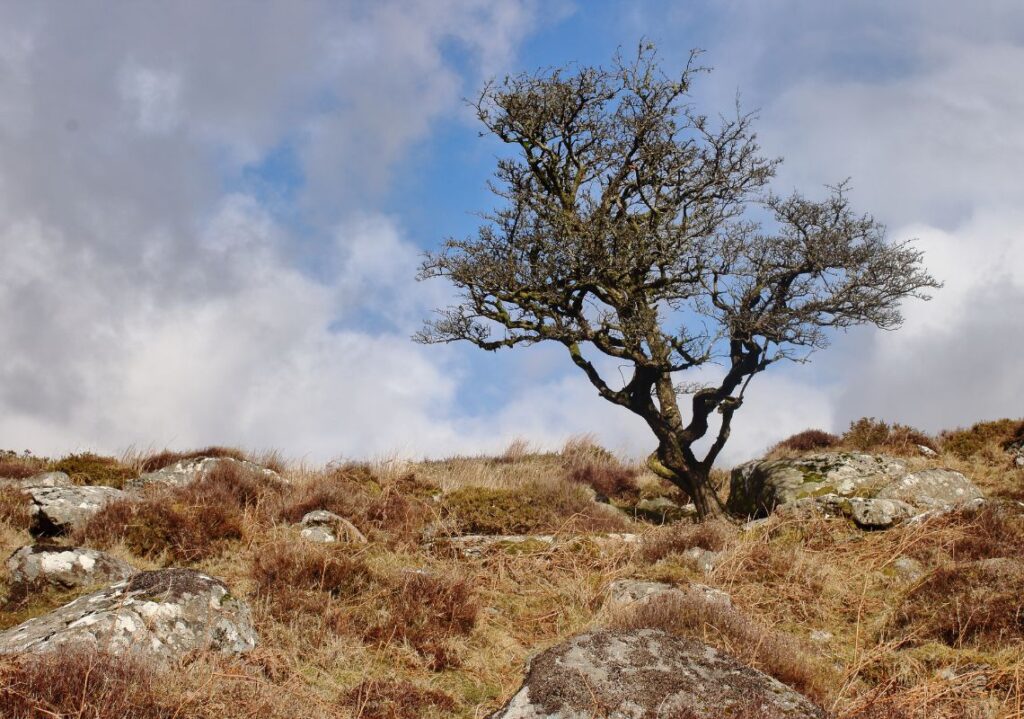

Nature & our natural resources need protecting
Rising temperatures also have profound impacts on our natural world in a variety of ways, including:
- Water Resources: Prolonged heat leads to increased evaporation, putting pressure on water resources, which can affect everything from drinking water supplies to river flows.
- Biodiversity: Different species have specific temperature tolerances. Increased heat can disrupt ecosystems, alter plant growth cycles, affect insect populations (vital for pollination), and stress wildlife. This has a knock-on effect on agricultural productivity and food security, directly impacting people’s livelihoods and access to food. The Climate Change Committee’s 2025 report on adaptation progress notes that the UK’s natural environment is still in decline, and integrated nature-based solutions are needed to address both nature loss and climate change.
Over the past three years, we’ve been working with key stakeholders to develop Dispelling The Myth; an initiative which debunks the idea that “it always rains up North” and we therefore water is plentiful. To prevent a water resource crisis, we must carefully manage our individual and collective use of water, looking after every drop.
In addition, we’ve been undertaking water audits at schools, community centres and businesses to help reduce leaks and better manage water as a resource in Greater Manchester and beyond.
How nature based solutions can help
What are nature based solutions?
Nature based solutions are “actions to protect, sustainably manage and restore natural or modified ecosystems that address societal challenges effectively and adaptively, simultaneously providing human well-being and biodiversity benefits” (Natural England). They leverage the power of natural processes to deliver tangible benefits.
How nature based solutions help tackle heat:
- Shade and Direct Cooling: A mature street tree can reduce the temperature beneath its canopy by several degrees, offering immediate relief to pedestrians.
- Evapotranspiration and Overall Cooling: Trees and green spaces act like natural air conditioners. Through a process called evapotranspiration, plants release water vapour, which cools the surrounding air. This is why a large park, like Heaton Park, can be significantly cooler than the surrounding urban environment – it create a ‘cool island’ effect. This can lower ambient temperatures by up to 5-10°C in some cases compared to heat-absorbing grey surfaces.
- Improved Air Quality: Beyond cooling, trees and plants filter airborne pollutants. This is especially critical during heatwaves, which often coincide with periods of poor air quality due to stagnant air, improving respiratory health for residents living in urban areas.
- Enhanced Air Flow: Strategically designed green infrastructure, such as green corridors or avenues of trees, can also channel cooler air and improve air circulation through urban areas, mitigating pockets of stagnant, hot air.
Nature-based solution examples commonly used in urban areas:
- Street Trees: Initiatives to plant more street trees are taking place across Greater Manchester including 20 street trees on Prestwich High Street. Trees will be included in the four rain gardens we’re currently creating in Oldham town centre as part of the Greening Oldham initiative.
- Green Roofs and Walls: Did you know that Salford has the biggest green wall in Europe?! This impressive green wall covers over 36,000 sq ft of the building with more than 350,000 plants of 32 different species. The Eden green wall acts as a natural climate control system for the building. The plants release water into the air through a process called evapotranspiration which has a natural cooling effect, lowering temperatures around the building. On a slightly smaller, but still important, scale we retrofitted green roofs and walls at Swinton Square in Salford, helping create an important stepping stone for nature in the city.
- Urban Parks and Woodlands: The transformation of brownfield sites into thriving greenspaces like Mayfield Park helps reduce the Urban Heat Island Effect. However, effective and ongoing management of existing greenspace is just as essential. We’ve been working in the Medlock Valley to improve the conditions of tree and woodland habitats. When optimised they provide significant cooling benefits, acting as vital green lungs for local communities.
- Sustainable Drainage Systems (SuDS) with Vegetation: Rain gardens, permeable paving and bioswales can absorb rainwater during heavy downpours, but the vegetation within them also provides cooling benefits through evapotranspiration. Four new raingardens will shortly be installed in Oldham with a diverse range of planting included.
- Community Gardens and Allotments: These spaces, often on previously neglected land, bring greenery, cooling, and community cohesion. Groundwork have recently supported Crumpsall and Cheetham Model Allotments to become more accessible, ensuring more people can access this cooler greenspace at all times.
- Permeable Surfacing: Traditional ‘grey’ infrastructure such as concrete, absorbs and re-radiates heat, whereas permeable paving, such as that used throughout West Gorton Community Park, reduces the UHI effect and promotes evaporative cooling.
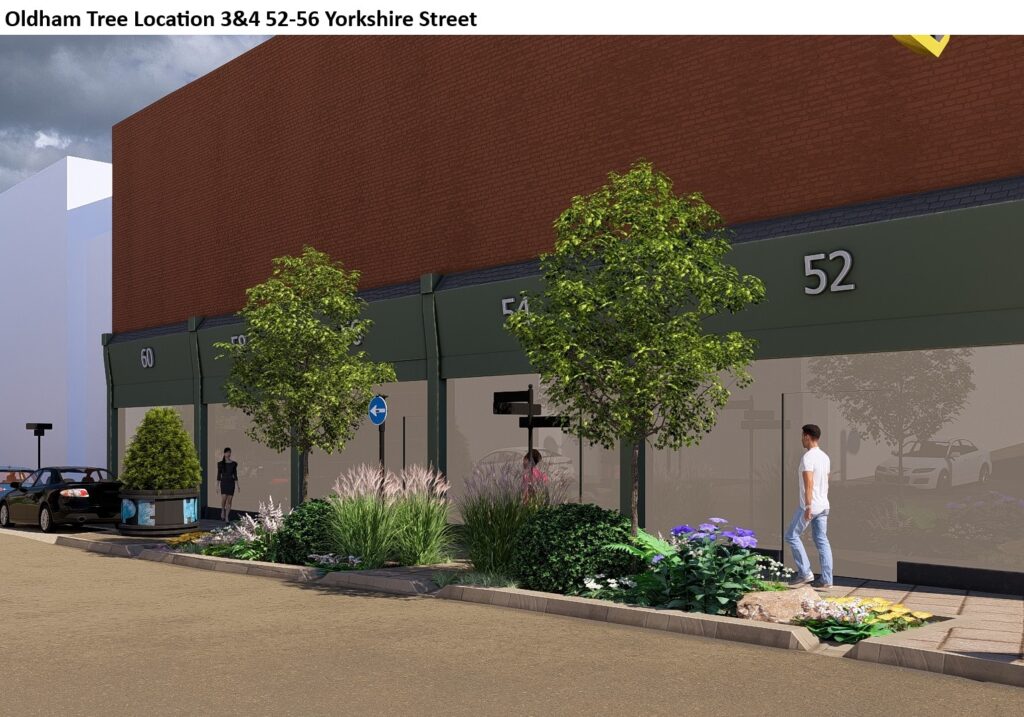
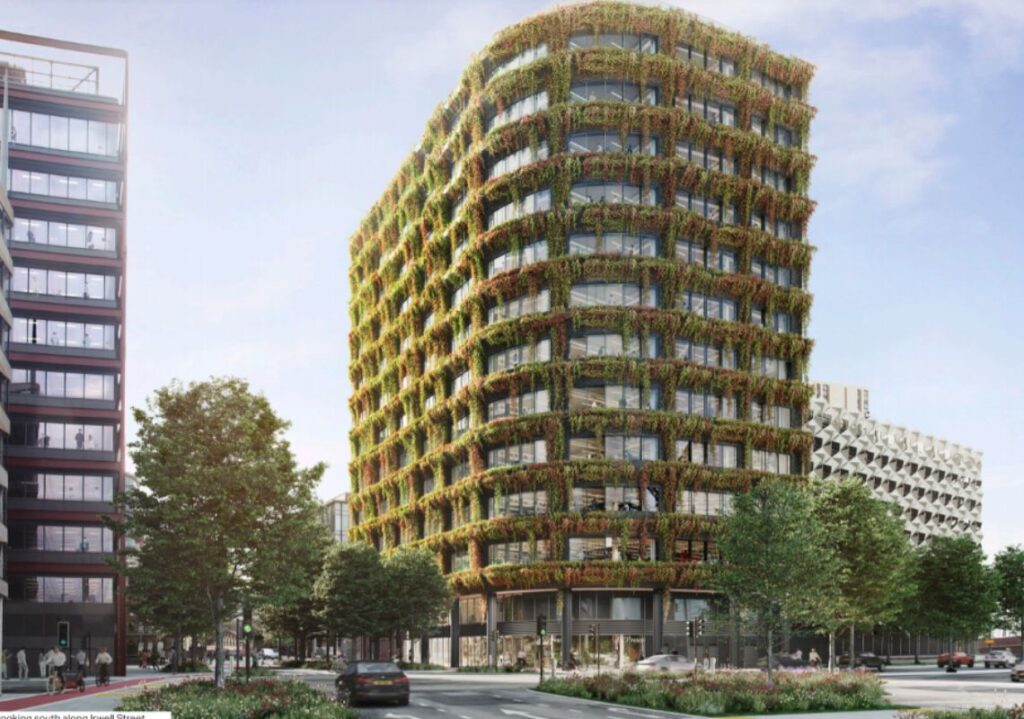
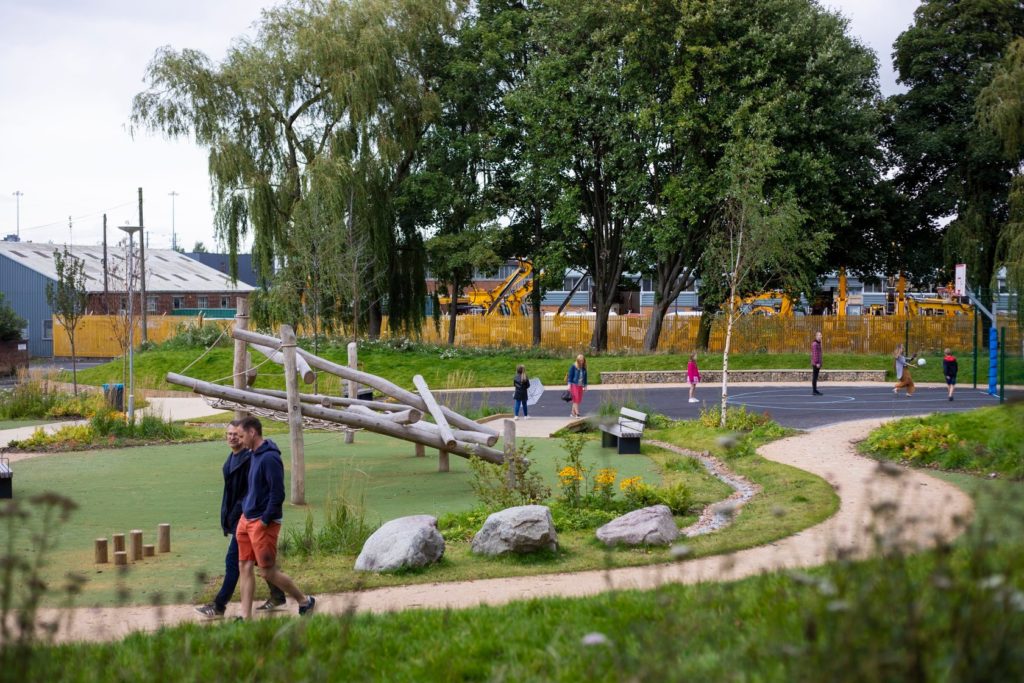
Nature cooling in action – Examples from around the world
Singapore
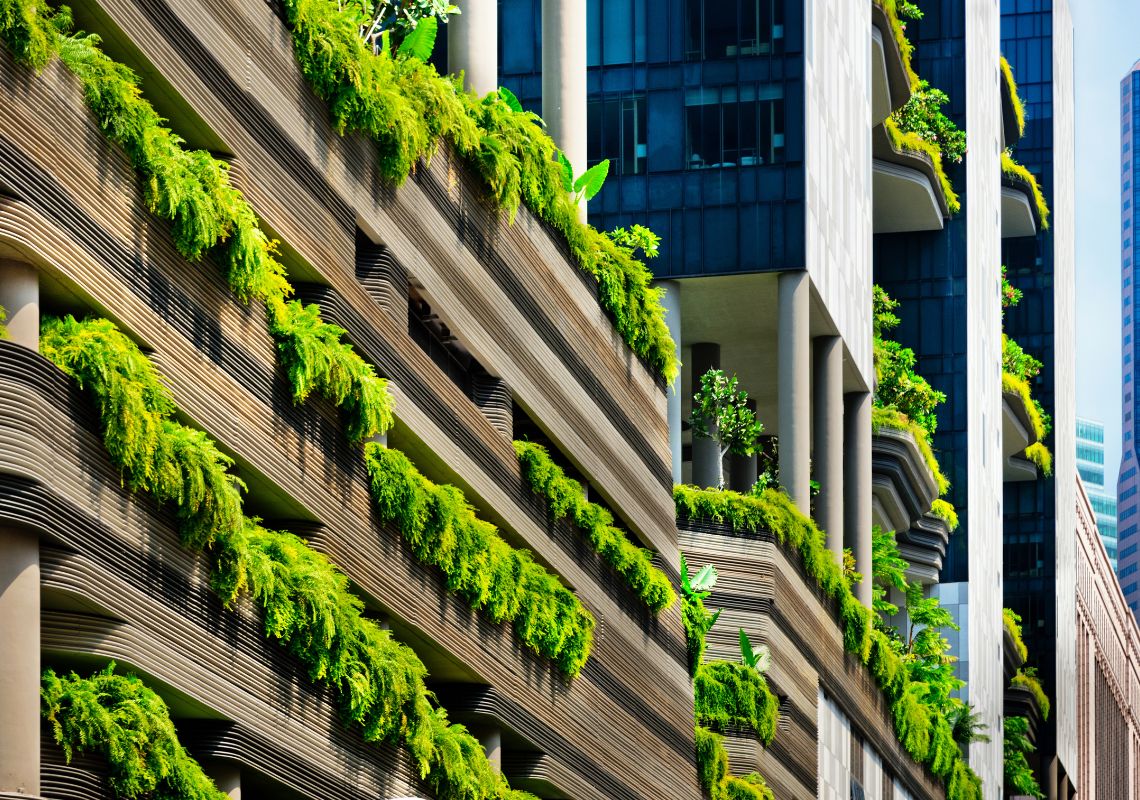
Singapore is perhaps the global leader in integrating nature into its urban fabric. Faced with a hot, humid climate and limited land, they’ve adopted a strategic, top-down approach which has successfully reduced urban heat island effects despite its rapid urbanization. They’ve done this through a number of initiatives including:
- Landscaping for Urban Spaces and High-rises (LUSH) Policy: This pioneering initiative mandates that new developments replace greenery lost at ground level by incorporating green roofs, vertical gardens, and other sky-rise greenery, often requiring 100% (or more) of the development site area to be landscaped.
- Park Connector Network: A vast network of green corridors link parks and green spaces across the island, providing continuous cool pathways for pedestrians and cyclists, and allowing for natural air movement.
- Supertrees at Gardens by the Bay: While iconic and tourist-attracting, these vertical gardens are also highly functional, collecting rainwater and acting as vertical ecosystems that contribute to local cooling through evapotranspiration.
- Biophilic Design in Buildings: Many new buildings feature extensive green walls, sky gardens, and internal atriums with lush vegetation, directly cooling the building interiors and creating a more comfortable microclimate around them.
Medellin, Columbia
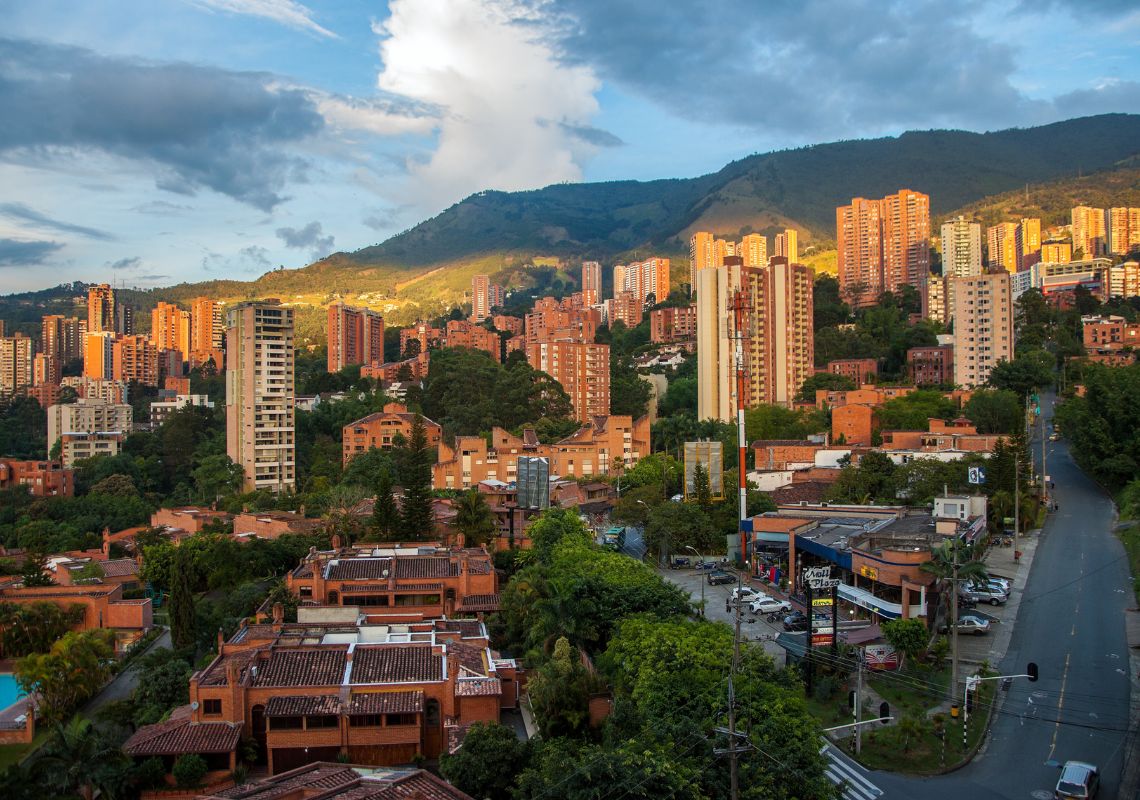
Medellín, known historically for other challenges, has transformed into an innovative, greener city through its Green Corridors project which demonstrates how large-scale, impactful urban greening projects can offers benefits beyond heat control, demonstrating strong political and community buy-in.
The Green Corridors initiative converted 30 busy roads and waterways into linear parks by planting thousands of trees and plants. These corridors are strategically designed to connect existing green spaces and mitigate urban heat islands in the city’s hottest areas.
The Green Corridors have successfully reduced average air temperatures in targeted areas by up to 4.5°C (from 31.6°C to 27.1°C) and surface temperatures by up to 10°C. They also improved air quality and increased walking and cycling.
Basel, Switzerland
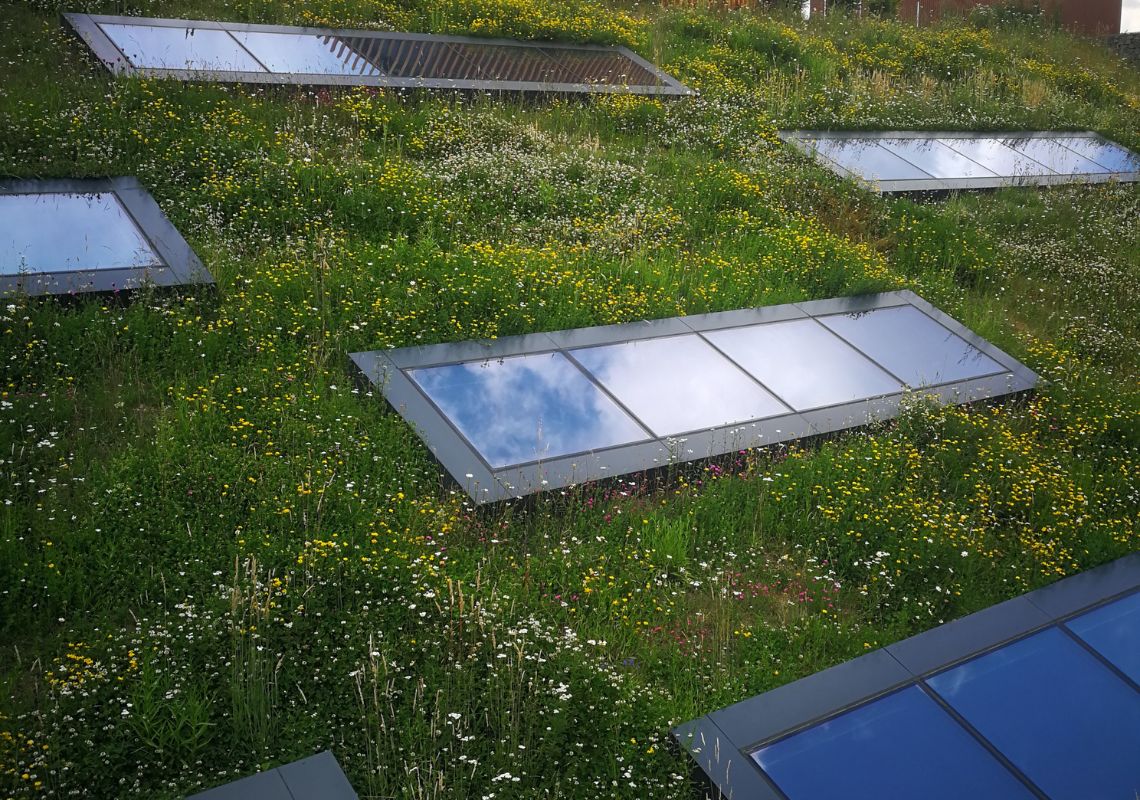
Basel is a pioneer in mandatory green roofs, introducing the Green Roof Mandate in 2002. Which requires all new and renovated flat roofs to be greened.
This proactive policy has led to a significant increase in green roof coverage across the city and has seen residents experience multiple benefits including:
- Insulation – reducing energy demand for heating and cooling.
- Absorb rainwater – reducing stormwater runoff into drains.
- New habitats – helping restore and protect biodiversity, particularly for insects and birds.
Basel is an excellent example of how a legislative approach can scale up adoption of nature-based solutions across an entire city, demonstrating long-term commitment to a more resilient city.
More nature based solutions for Greater Manchester
Our vision, aligned with the Greater Manchester Five-Year Environment Plan and the Manchester Climate Change Framework, is to see green infrastructure integrated into every new development and retrofitted into existing urban areas across the city-region so we can live in a thriving, nature-rich urban environment.
We will work with partners to plant 3 million trees in Greater Manchester by 2035 and work with communities who have unequal access to greenspace, or in neighbourhoods where there is a high risk of flooding or exposure to excess heat, creating a robust network of green spaces that actively cool our communities and improve our climate resilience for decades to come.
Barriers
- Space Constraints: One of the main challenges in dense urban areas is finding available space for large-scale greening. This requires creative solutions, like greening grey spaces, utilising rooftops, and integrating nature into existing infrastructure.
- Funding and Maintenance: While nature based solutions offer excellent long-term value, initial investment and ongoing maintenance can be a barrier. We need sustained funding and community involvement to ensure these green assets thrive.
- Awareness and Behaviour Change: Convincing investors and developers about the benefits of NbS requires continued education and shifting perceptions away from purely ‘grey’ solutions.
How you can help
Take action at home

Even small actions in your garden, balcony, or even windowsill can contribute to urban cooling and a number of other benefits.
Plant a climbing plant to shade a wall, put in a small tree, or create a mini rain garden. Every bit of green helps!
Volunteer

Whether it’s planting trees, maintaining a community garden, or helping with awareness events, every action makes a difference.
Check out the Get Involved section on our website for upcoming volunteering opportunities in your area.
Use your voice
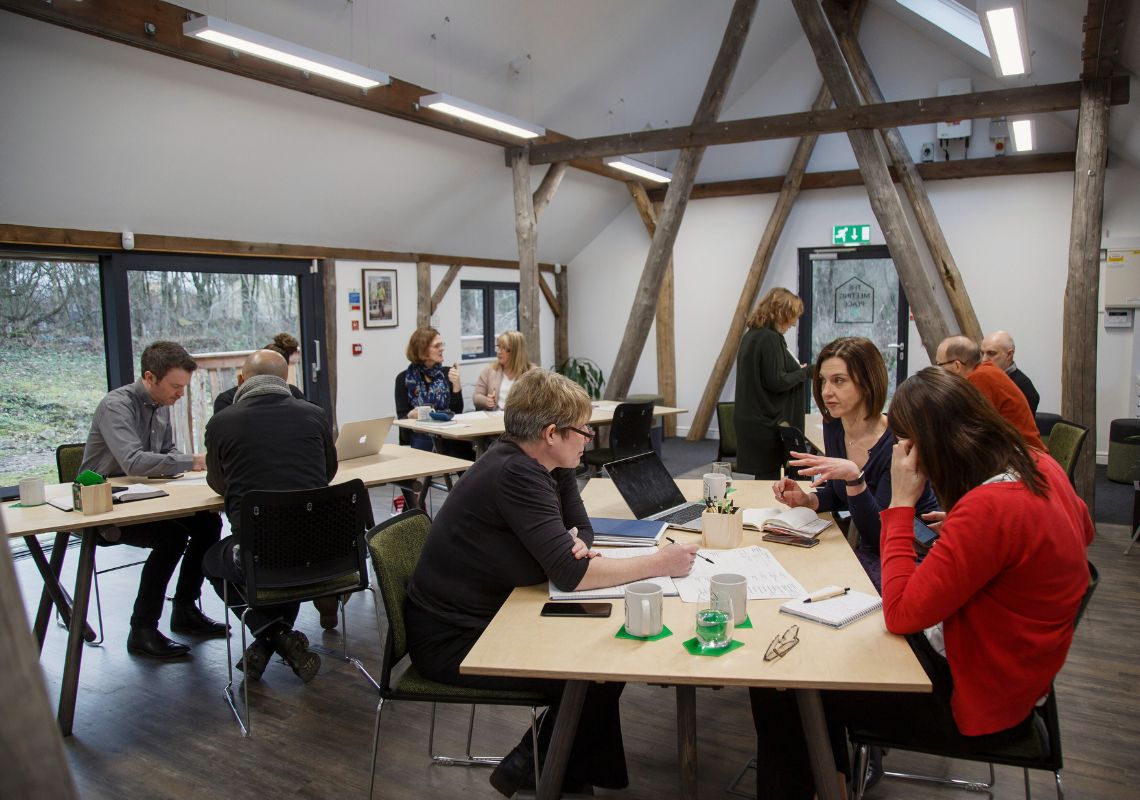
The more people who understand the power of nature, the stronger our movement for a cooler, greener Greater Manchester will be.
Share this blog with your friends, family, and colleagues and let your local councillors and developers know that you value more trees, parks, and green infrastructure in local planning decisions.

Lucy Stowell-Smith
Strategic Lead – Urban Nature
